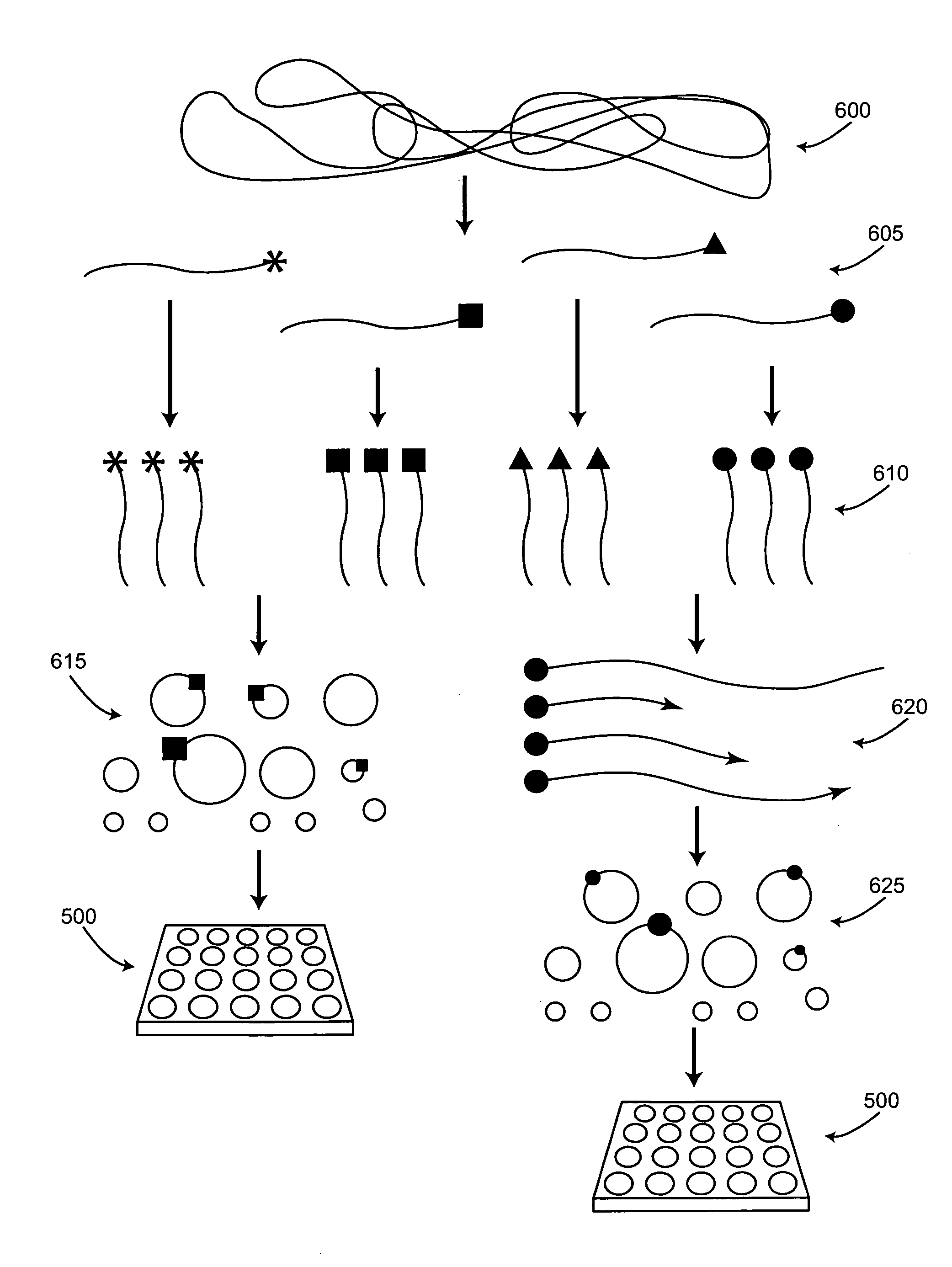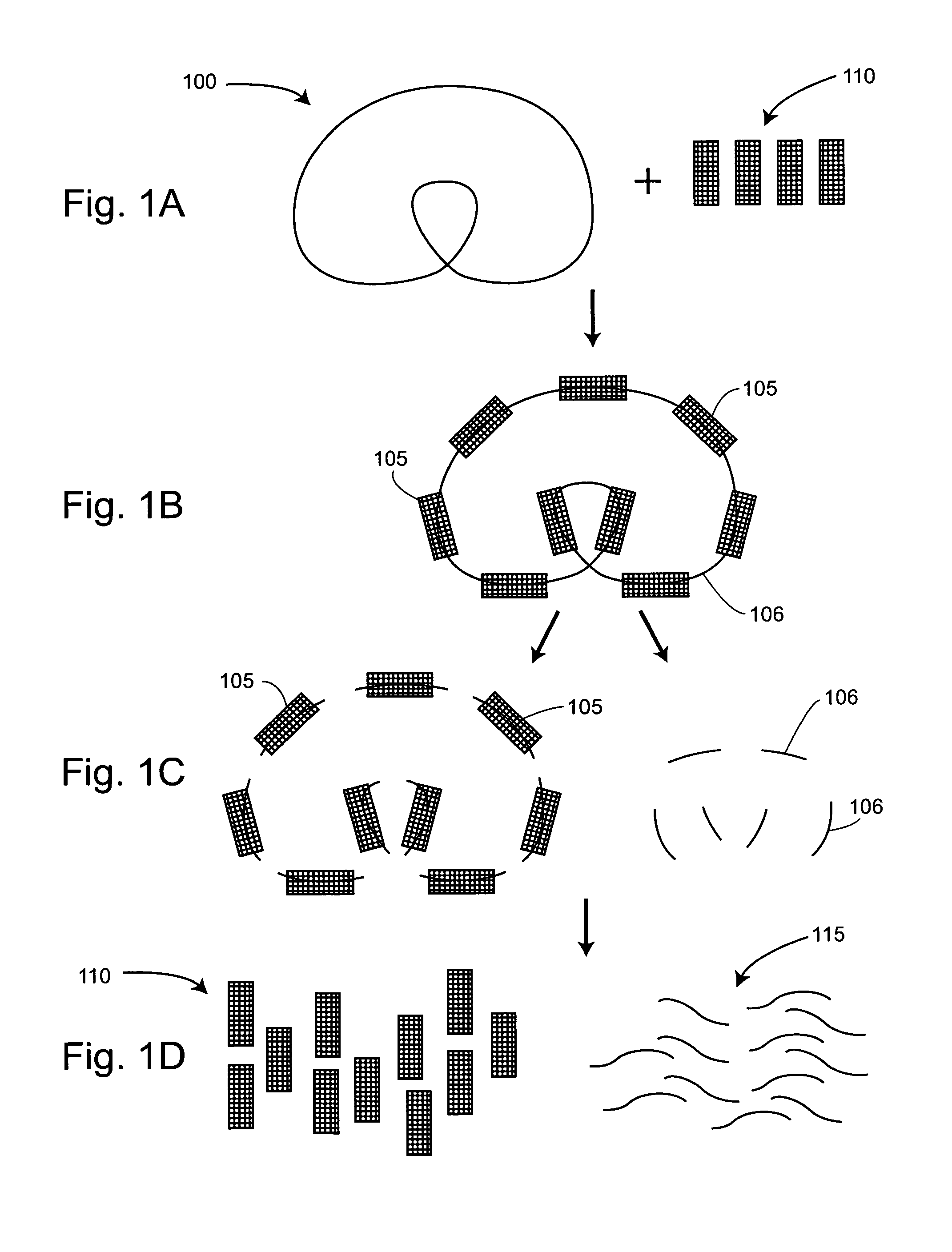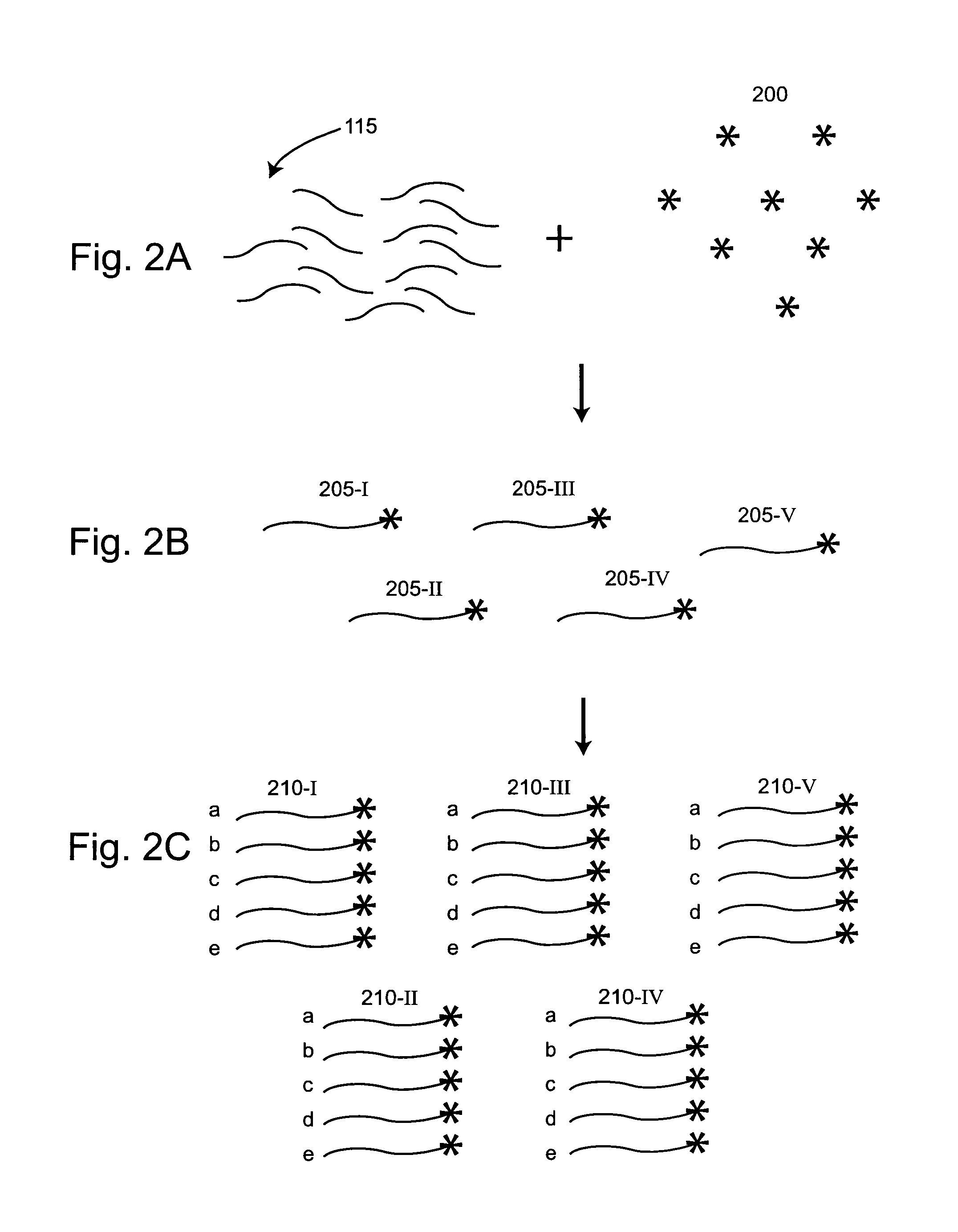Error-free amplification of DNA for clonal sequencing
a clonal sequencing and dna technology, applied in the field of nucleic acid sequencing, can solve the problems of time-consuming and time-consuming, single human genome sequencing, and current methods for preparing nucleic acid templates are not optimal for high-throughput dna sequencing systems, and achieve the effect of reducing the rate of nucleotide misincorporation
- Summary
- Abstract
- Description
- Claims
- Application Information
AI Technical Summary
Benefits of technology
Problems solved by technology
Method used
Image
Examples
Embodiment Construction
[0028]The present invention facilitates the preparation of nucleic acid templates and the distribution of these templates into low copy number reaction volumes. The compositions and methods provided by the invention are particularly useful for providing nucleic acid templates for sequencing to single molecule sequencing systems. Collecting reliable sequence data using such high-throughput sequencing technology depends in part on the availability of methods for the rapid and efficient production of high-quality nucleic acid templates. Furthermore, the reduction of sequencing costs from current levels is a benefit of the improved methods provided herein.
[0029]In a first aspect, the invention provides methods of preparing nucleic acid templates. In these methods, tags are linked to a population of nucleic acids of similar lengths, e.g., nucleic acid fragments whose lengths are within a 20% range of one another, to form tagged nucleic acids. These tagged nucleic acids are amplified to p...
PUM
| Property | Measurement | Unit |
|---|---|---|
| volumes | aaaaa | aaaaa |
| lengths | aaaaa | aaaaa |
| secondary structure | aaaaa | aaaaa |
Abstract
Description
Claims
Application Information
 Login to View More
Login to View More - R&D
- Intellectual Property
- Life Sciences
- Materials
- Tech Scout
- Unparalleled Data Quality
- Higher Quality Content
- 60% Fewer Hallucinations
Browse by: Latest US Patents, China's latest patents, Technical Efficacy Thesaurus, Application Domain, Technology Topic, Popular Technical Reports.
© 2025 PatSnap. All rights reserved.Legal|Privacy policy|Modern Slavery Act Transparency Statement|Sitemap|About US| Contact US: help@patsnap.com



